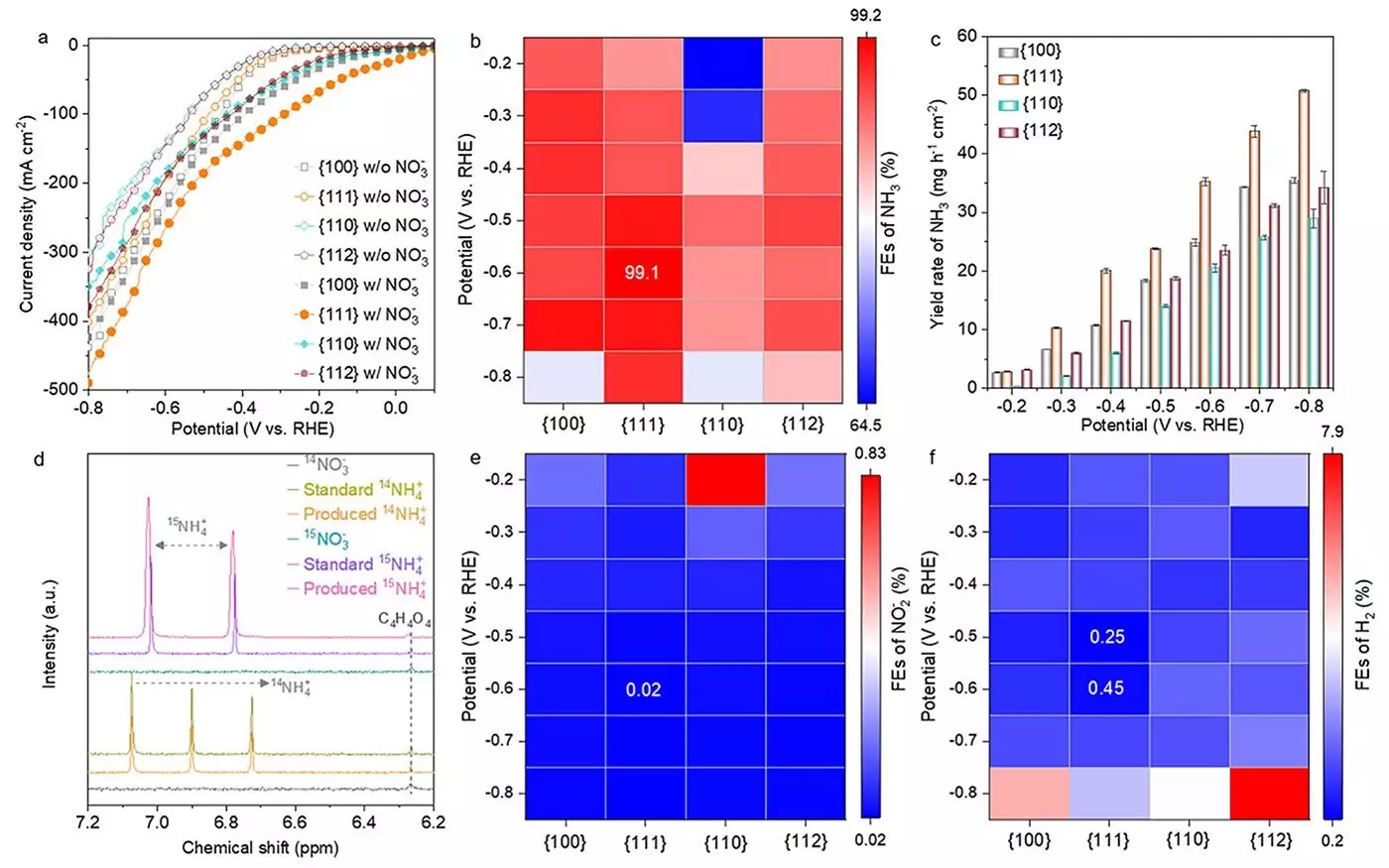As global populations strive for food security while grappling with climate change, sustainable practices in agriculture and energy are more crucial than ever. A significant portion of ammonia, which is integral to fertilizer production, is derived from the Haber-Bosch process. However, this conventional method is not without its drawbacks, as it consumes vast amounts of energy and contributes significantly to carbon dioxide emissions—approximately 1.8% of the total global output. Recognizing the need for alternatives, researchers are now rejuvenating interest in the electrochemical reduction of nitrates, which presents an opportunity to produce ammonia sustainably while simultaneously addressing nitrate waste pollution.
Unveiling New Catalysts: The Role of Cobalt Oxides
Recent advancements in catalyst technologies have ignited optimism in the field of electrochemical nitrate reduction reaction (eNO3RR) research. A pioneering study published in ACS Nano has illuminated the potential of spinel cobalt oxides (Co3O4) as efficient catalysts for this process. Their inherent low cost and high catalytic activity make them highly desirable. The researchers meticulously synthesized different nanostructures of Co3O4, each exhibiting unique crystallographic facets: {100}, {111}, {110}, and {112}. This intentional variation allowed for a granular understanding of how different facets could enhance the performance of catalysts in ammonia production.
The results were astonishing, particularly spotlighting the {111} facet, which demonstrated an exceptional ammonia Faradaic efficiency of 99.1%. This efficiency, coupled with a yield rate of 35.2 mg h-1 cm-2, underscores the promising nature of adopting Co3O4 for more efficient ammonia synthesis through eNO3RR.
The Mechanistic Insights Behind Enhanced Catalytic Performance
One of the most noteworthy aspects of this research is the discovery surrounding the transformation of the catalyst during the reaction. Initially, Co3O4 undergoes a shift to a structure with increased oxygen vacancies, progressing to a hybrid form of Co3O4−x-Ov/Co(OH)2, and ultimately stabilizing as Co(OH)2. These transformative stages are pronounced in the {111} facet, contributing to the extraordinary catalytic performance observed by the researchers. Dr. Heng Liu, a prominent figure in the study, emphasizes the role of these oxygen vacancies and the formation of Co(OH)2 in significantly enhancing the reaction efficiency.
The mechanistic revelations reveal an intricate relationship between structural changes and catalytic activity, providing a vital insight that could steer future research towards optimizing catalyst design. Understanding these transformations can provide essential knowledge in refining catalysts to serve specific needs in ammonia production.
Beyond agriculture, the ramifications of this research stretch into the realm of sustainable energy. Ammonia is touted as a potential zero-carbon fuel because it boasts an excellent energy density and emits no carbon upon combustion. Furthermore, the infrastructure for ammonia storage and transport is already well-established, positioning it as a viable alternative in our ongoing transition to green energy sources.
Moreover, this study does not merely focus on ammonia production but also reflects on the environmental aspect by proposing a solution to nitrate waste management. The ability to convert harmful nitrate into valuable ammonia could have profound implications for environmental remediation practices, adding another layer of significance to this research.
The extensive findings from this study lay a robust groundwork for developing future catalysts where performance can be fine-tuned for specific applications. Professor Hao Li, a leading author on the study, highlights the necessity of controlling the final phases of catalyst transformations to push the performance envelope further. Enhanced activity, selectivity, and stability are tantamount to creating a new standard in industrial ammonia production.
The exciting advancements in the optimization of Co3O4 catalysts for eNO3RR not only hold promise for cleaner ammonia production but also herald a shift in how we approach sustainable practices in energy and agriculture. This breakthrough aligns perfectly with global initiatives targeted at achieving carbon neutrality by the mid-century, ensuring that our methods of food production and energy utilization become more environmentally friendly. The road ahead is promising, as further exploration in this field could yield unprecedented benefits for our planet and future generations.


Leave a Reply